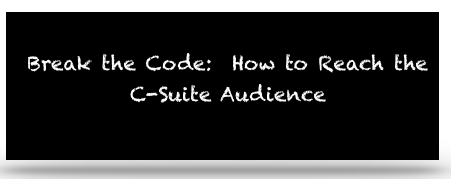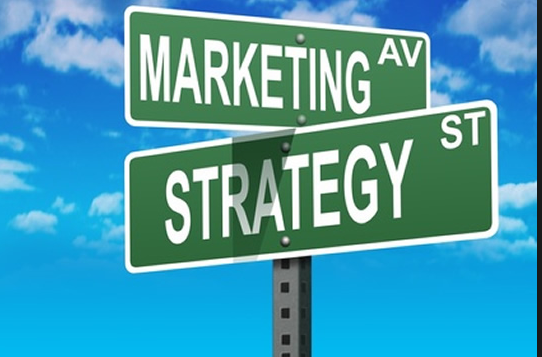Reaching the C-Suite with Content: How to Crack the Code
 Marketing and sales professionals all want to reach the C-Suite. But there are always two questions that come up in those discussions: 1) How do I reach the C-Suite? and 2)Does the C-Suite really even consume online content? Well, thanks to Forbes and Insights, there are some interesting answers to those questions. So, continue reading to learn how to reach the C-Suite and how to crack the code to actually get past the gatekeepers:
Marketing and sales professionals all want to reach the C-Suite. But there are always two questions that come up in those discussions: 1) How do I reach the C-Suite? and 2)Does the C-Suite really even consume online content? Well, thanks to Forbes and Insights, there are some interesting answers to those questions. So, continue reading to learn how to reach the C-Suite and how to crack the code to actually get past the gatekeepers:
1. The Internet Reigns
There has definitely been a shift happening in the C-Suite. According to the research, in 2008 the mean age of the C-Suite was 50.7. Fast forward to 2014 and the mean age is now 46.7. This small and subtle shift has made for some much bigger shifts in how the C-Suite accesses and consumes business-related data. As a part of that shift, the majority of members now prefer to use the Internet to access information. Surprisingly for many, the Internet is preferred over references from colleagues, personal networks, newspapers, TV, radio and even conferences and trade shows. This is definitely a shift from just a few years ago.
2. Video and Online Networks Emerge as C-Suite Tools
Don’t forgo the text communications just yet, but with the ever busy and on-the-go C-suite, easily accessed and easily consumed content that can be listened to or watched while on the go is definitely on the rise. If you want to reach the C-Suite, don’t forget this media.
3. Generation PC
Did you just get used to the Baby Boomers, Generation X, Generation Y, etc? Well, Generation PC is the group that you will find most in the C-Suite these days. These 40-50 year olds pretty much have worked with technology throughout their careers starting out with electronic spreadsheets, email and word processors. They are comfortable with technology and even prefer searching and finding business-related information on their own. Want to reach the C-Suite, think about this age group and their preferences.
4. Generation Netscape
The newest group to be coming into the C-suite is Generation Netscape. This under 40 group are the first digital natives that we will have in the top spots of corporations around the world and they are used to consuming content when, where and how they want. To reach this group, you will want to make sure that your content is not only relevant, but accessible on multiple platforms and devices.
5. Content is Still King
Rethinking your content strategy? Is your C-Suite questioning you about who your audience is and whether not you can reach the C-Suite? Before throwing the baby out with the bath water, remember that content needs to be good. Don’t just create content for the sake of creating content. In addition to creating great content, here are some other findings from the research to help guide you:
- 81% of respondents under the age of 50 check the Internet daily for business intelligence
- 58% (under 50) see high value of content from websites, blogs and other online content
- 54% of C-Suite members under 50 prefer sourcing business content themselves (a.k.a no gatekeeper)
- 87% (of the under 50 crowd) use search engines like Google, so your content must be searchable and more important, easy to find
Thanks for Forbes and Insights, we know that the C-Suite wants and consumes valuable content, including blog content. The key however, is to create valuable content that can be found through search.
If you like this post, feel free to follow me on Twitter @MacLeanHeather.




